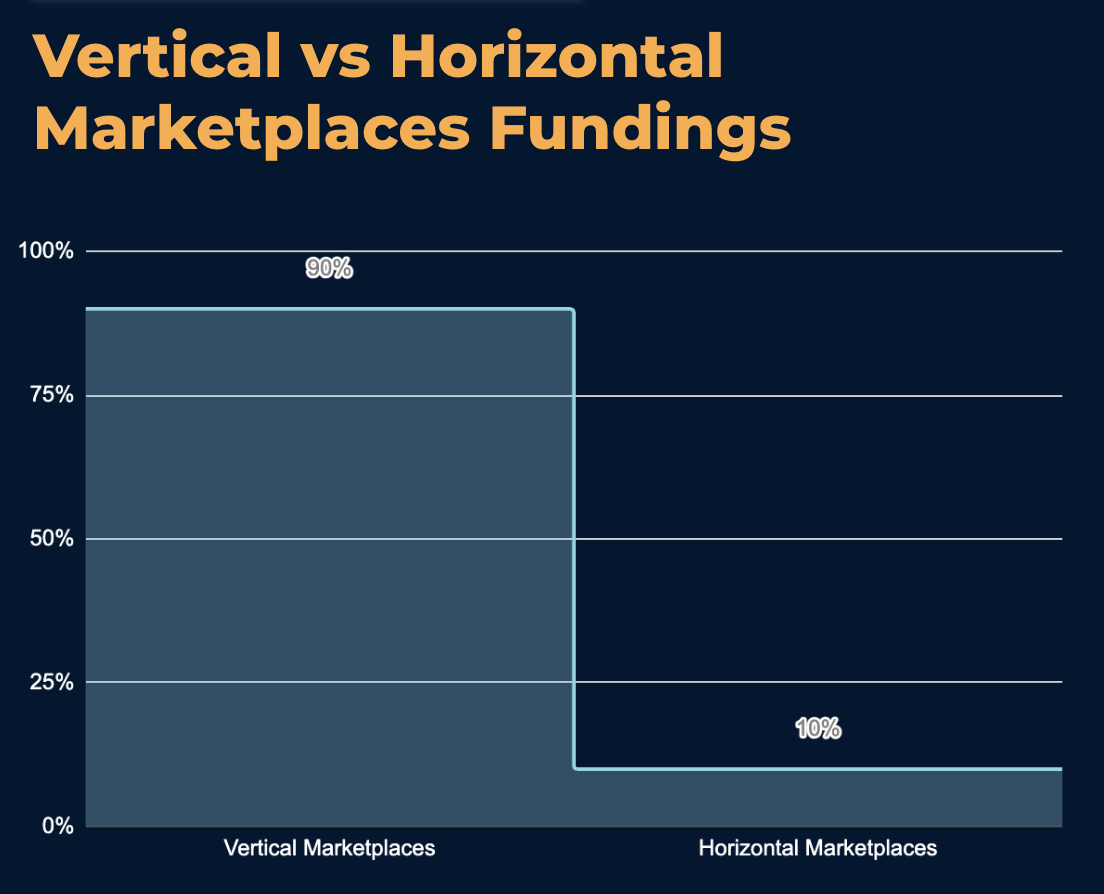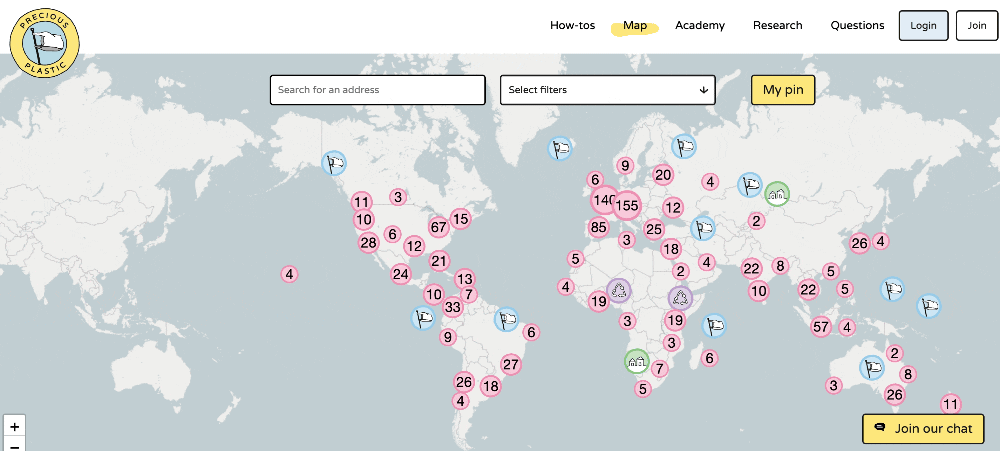Vertical vs. Horizontal Marketplaces: Which is the Best Choice for Today’s Entrepreneur?
Written by
Editorial TeamPublished on
Considering starting an online marketplace? Discover the crucial choice between vertical and horizontal models, each with unique benefits for entrepreneurs. Dive into Emma’s journey as she navigates this decision to create a successful, sustainable business. Click to learn which marketplace strategy might be the perfect fit for your entrepreneurial dreams. (Ad)

Commercial collaboration
There are a lot of entrepreneurs who had a dream of building a large eCommerce business. Some won, many failed. But there’s one whose story we’d like to share with you because it shows how difficult it could be to make big decisions. Meet Emma.

Emma is dedicated to sustainable living and has worked in the environmental sector for years. Frustrated by how hard it is to find eco-friendly products, she decides to create an online marketplace that only sells sustainable and ethically sourced goods. Emma’s goal is to make it simpler for people to live sustainably by offering a one-stop shop for all their eco-friendly needs.
However, Emma faces a crucial decision right from the very beginning: should she create a vertical marketplace or a horizontal one?
At that time, she didn’t really know these terms. She was choosing between selling only eco-friendly home furniture and offering a wide range of sustainable items not confined to one category or niche. That was basically the choice between a vertical and a horizontal marketplace.
To understand her dilemma, let’s dive into the world of vertical and horizontal marketplaces and see what they are.
Vertical and Horizontal Marketplaces Put Simply
Vertical marketplaces are like specialty stores. Imagine a shop that sells only gourmet coffee beans. It’s tailored to coffee enthusiasts, offering a range of products, services, and content all centered around coffee. Similarly, vertical marketplaces focus on a specific niche or industry. They cater to a particular audience with specialized needs. In Emma’s case, this could be a marketplace that only offers eco-friendly home furniture.
Horizontal marketplaces, on the other hand, are like department stores. Think of a place like Walmart or Amazon, where you can find everything from electronics to groceries. These marketplaces offer a wide variety of products across multiple categories, appealing to a broad audience with diverse interests. If Emma opens a horizontal marketplace, it could offer various eco-friendly products ranging from food to construction materials.
Emma wonders which model suits her vision of an eco-friendly marketplace. To make an informed decision, she decides to explore the market trends, analytics, and consumer behavior.
Market Trends, Analytics, and Consumer Behavior
Emma starts her research by examining current market trends. She discovers that consumer behavior has shifted significantly in recent years. People are more inclined to shop online, seeking convenience and hyper-personalized service.
Data shows that vertical marketplaces are gaining popularity because they offer specialized products and a sense of community among like-minded shoppers. For example, marketplaces like Etsy, focusing on handmade and vintage items, and StockX, targeting sneaker enthusiasts, have seen tremendous growth.
Emma came across interesting research by New Adevinta Ventures and Dealroom.co that confirms vertical marketplaces attracted 90% of funds in the recent three years, while horizontal ones attracted only 10%.

According to Dealroom.co, not only are vertical marketplaces gaining popularity, growing, and becoming more attractive for consumers, they are transforming into hyper-verticalized marketplaces:
“Instead of selling fashion in general, we see marketplaces focusing on bags or sneakers specifically or second-hand items, or B2B marketplaces focused on metals or manufacturing wastes. This verticalization also means these marketplaces usually offer very targeted additional services to their users, from financing to SaaS, using their key understanding of the specific needs in the application.”
However, horizontal marketplaces remain dominant players. Giants like Amazon and eBay attract millions of customers daily thanks to their vast product range and competitive pricing. So, Emma realizes that both models have their unique advantages and challenges, which she should carefully consider.
Advantages and Challenges of Vertical Marketplaces
Emma thinks about the benefits of starting a vertical marketplace for sustainable goods. One big advantage is that she can create a personalized experience for her target audience. She can carefully select eco-friendly brands, offer expert advice on sustainable living, and build a community of environmentally conscious shoppers.
Advantages:
- Specialized focus: Vertical marketplaces offer products and services designed for specific needs, making the shopping experience better. For example, Emma can provide detailed product descriptions, sustainability certifications, and user reviews for eco-friendly furniture.
- Higher trust and loyalty: Customers of vertical marketplaces often have high trust and loyalty due to the specialized knowledge and curated product selection. Emma’s marketplace can build a reputation as a trusted source for sustainable goods.
- Community building: By focusing on a niche, vertical marketplaces can create a strong sense of community among users. Emma can set up forums, blogs, and social media groups where users share tips and experiences on sustainable living.

Challenges and Solutions:
Limited market size: The niche market can limit growth potential.
✔ ️ Solution: Emma can expand her product range within the eco-friendly niche, such as offering sustainable fashion, home goods, and personal care products, to attract a broader audience.
Brand building: Establishing a brand in a niche market requires significant effort and investment.
✔ ️ Solution: Emma can use social media, influencer partnerships, and content marketing to build her brand and effectively reach her target audience.
Supplier dependence: Finding and maintaining reliable suppliers can be challenging. In a narrow niche, working with reliable suppliers is crucial because one mistake can quickly ruin your reputation across forums, social media, and communities.
✔ ️ Solution: Emma can thoroughly check suppliers by consulting with their existing customers, build strong relationships with multiple suppliers, and have backup options to manage supply chain risks.

Vertical Marketplaces vs. Horizontal Marketplaces: Key Factors to Compare
Emma is evaluating whether to launch a vertical marketplace focusing narrowly on eco-friendly furniture made from recycled materials or a horizontal marketplace that offers a broader range of sustainable goods. She carefully considers each factor to understand the implications for her specific business goals.
So, Emma breaks down the comparison into four key factors:
Factor #1: Product Range
- ↕ Vertical marketplaces: Focus on a specific niche with a wide variety of related products. Emma’s marketplace would specifically offer eco-friendly furniture made from recycled materials. She considers how this focus could help her offer highly specialized products that meet specific customer needs, boosting her brand’s expertise and reputation in this area.
- ↔ Horizontal marketplaces: Offer a wide range of products across different categories. This could expand her potential market, but Emma is concerned that it might weaken her brand’s focus on sustainability and make it more difficult to distinguish herself in a crowded market.
Factor #2: Customer Base
- ↕ Vertical marketplaces: Attract a specific, passionate audience interested in the niche. Emma thinks that targeting eco-conscious consumers who are specifically searching for sustainable furniture could lead to a more engaged and loyal customer base.
- ↔ Horizontal marketplaces: Appeal to a wide audience with various interests. Emma thinks that while this could bring in more visitors, it might not lead to as many sales because the audience might not be as dedicated to sustainability as her target niche.
Factor #3: Competition
- ↕ Vertical marketplaces: Encounter less direct competition but need to compete based on expertise and specialization. Emma is confident that her extensive knowledge of sustainable furniture can provide her with an advantage over larger platforms that don’t specialize in this area.
- ↔ Horizontal marketplaces: Experience strong competition from other large platforms. Emma is worried about competing against well-established companies like Amazon, which have extensive resources and a wide range of products.
Factor #4: Marketing Strategy
- ↕ Vertical marketplaces: Can use specific marketing and content to reach a targeted audience. Emma intends to use sustainability blogs, eco-friendly influencers, and green living forums to directly connect with people interested in eco-friendly furniture.
- ↔ Horizontal marketplaces: Depends on wide-reaching marketing campaigns and brand recognition. Emma understands that this method would need a large budget and might not successfully reach her ideal customers who are specifically looking for sustainable furniture solutions.
After carefully considering these factors, Emma decides that a vertical marketplace is the best fit for her goal of selling eco-friendly furniture made from recycled materials. She believes this focus will help her establish a strong brand, attract a dedicated customer base, and effectively compete in her chosen niche.

What Types of Businesses Benefit from Which of Two Models
Emma looks into which types of businesses do well in vertical and horizontal marketplaces, thinking about how she might expand her own marketplace in the future.
Vertical Marketplaces
- Niche businesses: Great for businesses focused on a specific area or industry, like sustainable fashion, specialty foods, or hobby products. For example, Reverb succeeds because it offers a detailed selection of musical instruments, meeting the specific needs of musicians.
- Community-oriented businesses: Perfect for businesses that can build a strong community around their niche. For instance, Emma’s marketplace for eco-friendly furniture could create a loyal community of people who care about sustainability and share similar interests.
Horizontal Marketplaces
- General merchandise: Suitable for businesses that sell a wide range of products across different categories. Amazon, for example, serves a vast customer base with its extensive selection of products, from electronics to home goods.
- Scalable businesses: Good for businesses looking to grow quickly and reach a large audience. eBay uses its wide product range and auction format to attract a diverse group of buyers and sellers from all over the world.
Emma thinks about these differences as she plans how her marketplace might grow. She knows that vertical marketplaces like hers are good at providing specialized products and creating a close community. But if she needs to expand her range or reach more customers, she might consider using some strategies from horizontal marketplaces to help her business grow effectively. This way, she can ensure her marketplace adapts and succeeds as the market changes.
***


